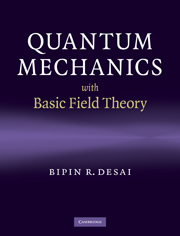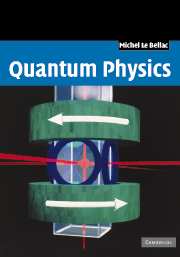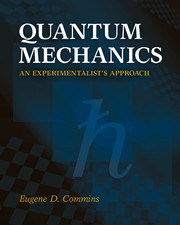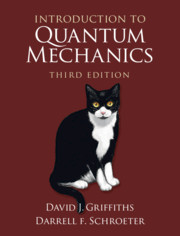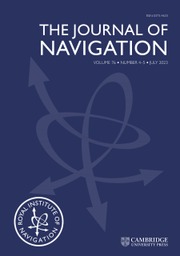An Introduction to Quantum Theory
Underpinning the axiomatic formulation of quantum theory presented in this undergraduate textbook is a review of early experiments, a comparison of classical and quantal terminology, a Schroedinger-equation treatment of the one-dimensional quantum box, and a survey of relevant mathematics. Among the many concepts comprehensively discussed are: operators; state vectors and wave functions; experimental observables; classical/quantal connections; and symmetry properties. The theory is applied to a wide variety of systems including the non-relativistic H-atom, external electromagnetic fields, and spin. Collisions are described using wave packets. Various time-dependent and time-independent approximations are discussed; applications include electromagnetic transition rates and corrections to the H-atom energies. The final chapter deals with identical-particle symmetries and their application to the He atom, the Periodic Table and diatomic molecules.
- Includes discussion of recent developments
- Contains a very large number of figures and exercises
- Covers background material, terminology and all relevant mathematics
Reviews & endorsements
'… [a] sound reliable text, suitable for students with the appropriate abilities and background.' Alastair Rae, The Times Higher Education Supplement
Product details
December 2001Paperback
9780521598415
808 pages
244 × 170 × 41 mm
1.26kg
163 b/w illus. 20 tables
Available
Table of Contents
- Preface
- Part I. Introductory:
- 1. The need for a non-classical description of microscopic phenomena
- 2. Classical concepts and quantal inequivalencies
- 3. Introducing quantum mechanics: a comparison of the classical stretched string and the quantal box
- 4. Mathematical background
- Part II. The Central Concepts:
- 5. The postulates of quantum mechanics
- 6. Applications of the postulates: bound states in one dimension
- 7. Applications of the postulates: continuum states in one dimension
- 8. Quantal/classical connections
- 9. Commuting operators, quantum numbers, symmetry properties
- Part III. Systems with Few Degrees of Freedom:
- 10. Orbital angular momentum
- 11. Two-particle systems, potential-well bound state problems
- 12. Electromagnetic fields
- 13. Intrinsic spin, two-state systems
- 14. Generalized angular momentum and the coupling of angular momenta
- 15. Three-dimensional continuum states/scattering
- Part IV. Complex Systems:
- 16. Time-dependent approximation methods
- 17. Time-independent approximation methods
- 18. Many degrees of freedom: atoms and molecules
- Appendix A. Elements of probability theory
- Appendix B. Fourier series and integrals
- Appendix C. Solution of Legendre's equation
- Appendix D. Fundamental and derived quantities, conversion factors
- References.


